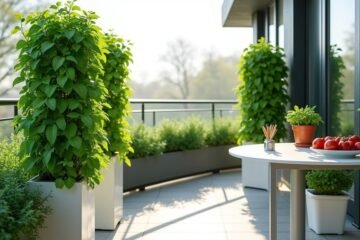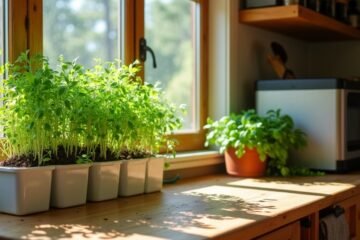Ready to grow fresh veggies right at home? Start by choosing the perfect hydroponic system—like deep water culture for those crunchy leafy greens! Next, gather essentials like containers, a nifty nutrient delivery system, and a cozy growing medium. Set up your environment with bright LED lights and a comfy temperature around 65 to 75 degrees Fahrenheit. Don’t forget to whip up your nutrient solution and plant those seeds! Keep an eye on your garden, and watch it flourish! Intrigued? Let’s explore more!
Choose the Right Hydroponic System Type
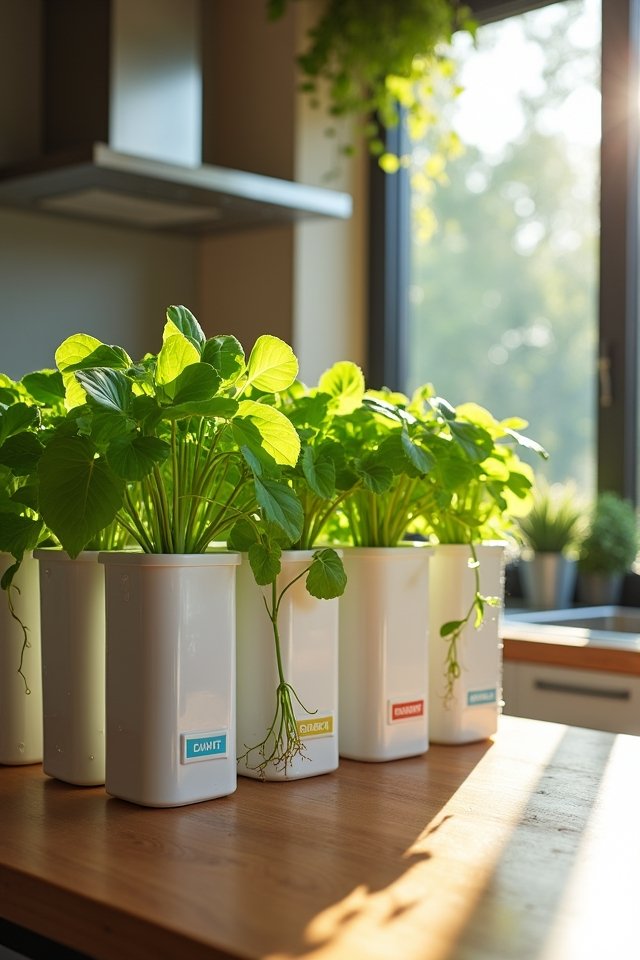
When it comes to choosing the right hydroponic system type, where do you even start? With so many options, it can feel like a maze! First, think about system efficiency—some systems are designed for quick growth, while others cater to larger crops. Are you dreaming of plump tomatoes or delicate basil? Your crop selection matters! For example, a deep water culture system works wonders for leafy greens but might struggle with heavier fruits. Alternatively, a nutrient film technique excels for fast-growing herbs but isn’t ideal for bigger plants! Imagine the fresh, vibrant produce your home could yield! So, weigh your options wisely, and don’t hesitate to experiment! Who knows? You might just uncover your green-thumb superpower!
Gather Essential Materials and Supplies
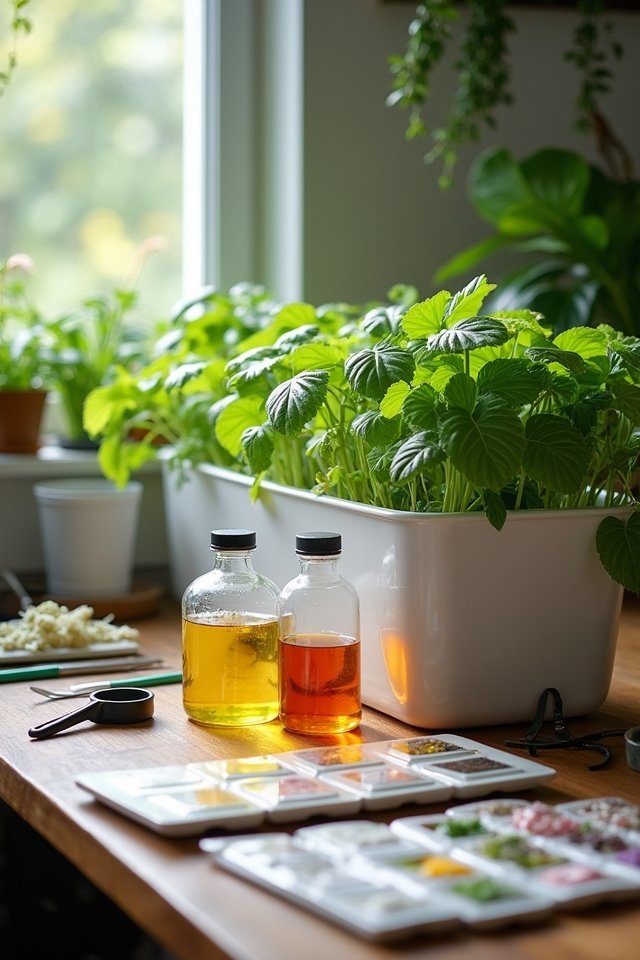
Now that you’ve got a grip on picking the right hydroponic system, let’s gather those materials and supplies—it’s time to arm yourself for this fun gardening adventure! You’ll need some essentials for an efficient setup that guarantees your plants thrive.
Here’s what you should grab:
- Hydroponic containers: Choose ones that fit your plants’ needs, whether it’s buckets, trays, or PVC pipes!
- Nutrient delivery system: This is how those glorious nutrients reach your plants; a good one is a must!
- Growing medium: Think clay pebbles or coco coir; it helps anchor your plants!
- Water pump and tubing: These are crucial for circulating water and nutrients—don’t skip this step!
With these materials in hand, you’re ready to start your hydroponic journey!
Set Up Your Growing Environment
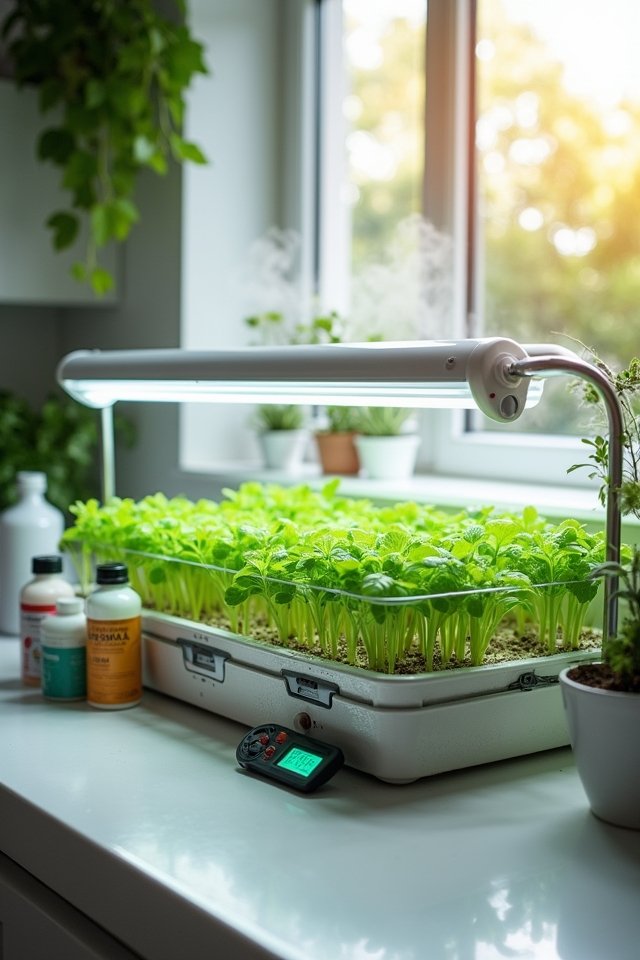
Setting up your growing environment is like creating a cozy home for your plants—they need the right conditions to thrive! First, you’ll want to explore lighting options; think about LED grow lights that mimic sunlight, ensuring your greens get that energy boost they crave. Position them 12 to 24 inches above your plants, and watch them reach for the light! Next, consider temperature control—aim for a cozy 65 to 75 degrees Fahrenheit. A heater or fan can work wonders, keeping things just right. Remember, plants get grumpy with drastic changes! So, create a warm, inviting haven where your leafy friends can flourish. Trust me, your future salad will thank you! Let’s make this a vibrant oasis!
Prepare Nutrient Solution and Plant Seeds
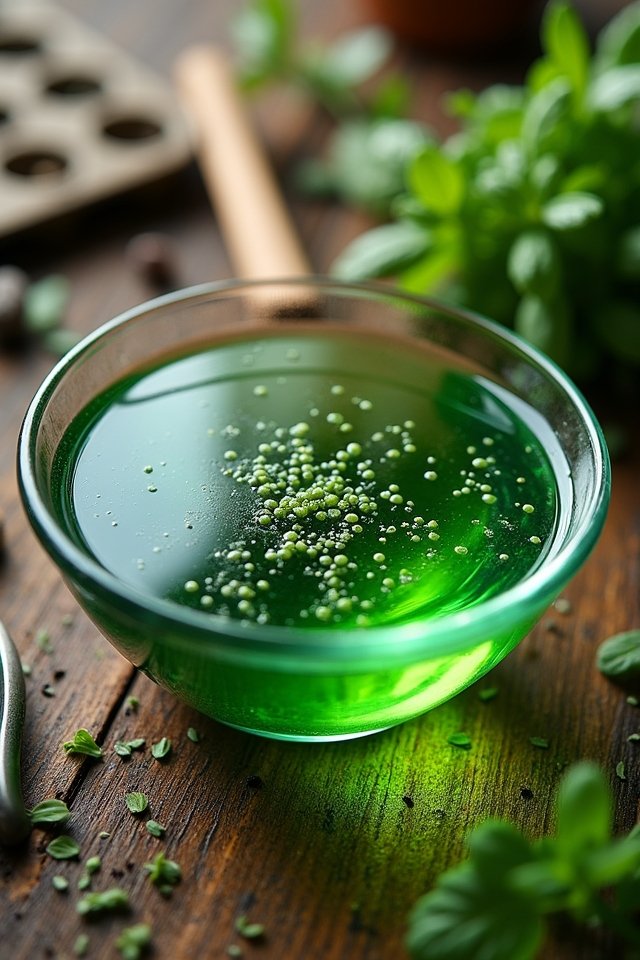
Mixing your nutrient solution and planting those seeds is like whipping up a secret potion for your garden’s success! You’ll want to nail those nutrient ratios to give your plants a powerful boost. Start by choosing high-quality nutrients that match your plants’ needs.
Here’s what to keep in mind:
- Select seeds that flourish in hydroponic systems, like lettuce or herbs.
- Dissolve your nutrients in water, stirring slowly to avoid clumps.
- Check the pH level—ideal is around 5.5 to 6.5.
- Follow instructions closely; too much can be as bad as too little!
Now, get those seeds planted in your grow medium. You’ve set the stage for an exciting hydroponic adventure! Let the growing begin!
Monitor and Maintain Your Hydroponic Garden
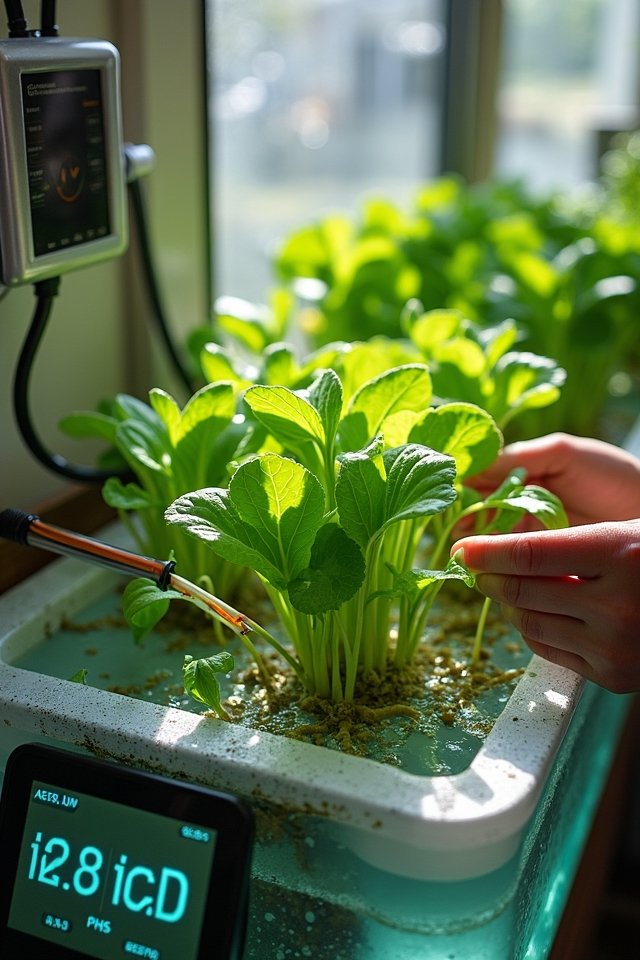
Keeping an eye on your hydroponic garden is like being a proud parent—you’re nurturing little green wonders that need your attention! First, adopt pH monitoring; it’s your garden’s health report card! Aim for a pH between 5.5 and 6.5, adjusting as needed. Next, keep tabs on your nutrient levels like a chef perfecting a recipe. Regularly check the nutrient solution concentration—too high or low, and your plants might sulk! Think of it as giving your plants a well-balanced diet. Did you know leafy greens thrive on a nitrogen-rich mix? Oh yes! Finally, don’t forget to inspect for pests. Remember, a happy hydroponic garden means bigger, healthier harvests! Isn’t innovation in gardening just thrilling?
Frequently Asked Questions
Can I Use Regular Water Instead of Nutrient Solution?
You might think regular water could work, but it can barely hold a candle to nutrient solutions! Water quality matters immensely. Without that nutrient balance, your plants won’t thrive! Just like a car needs fuel, your plants need those essential nutrients to grow vigorously. Imagine feeding them plain old water—it’s like munching on cardboard! If you’re aiming for a lush garden, don’t skimp on the nutrients; they’re the magic potion your plants need!
How Often Should I Change the Nutrient Solution?
You should change your nutrient solution every two weeks to keep those nutrient levels soaring high! Think of it like a revitalizing smoothie for your plants. Check the solution temperature, too; it should be around 65-75°F for ideal growth. If you notice any funky smells or weird colors, it’s definitely time for a change! Your plants will thank you with vibrant leaves and juicy fruits. Who doesn’t love a flourishing garden at home?
What Types of Plants Grow Best in Hydroponics?
You’re in for a treat with hydroponics! Leafy greens, like kale and spinach, thrive in this setup, growing faster than your favorite superhero. Fruiting vegetables, such as juicy tomatoes and crisp peppers, also shine in hydroponic gardens, bursting with flavor and color. Imagine plucking a ripe tomato right from its vine, juices glistening in the sun! You’ll love how vibrant and fresh these plants become when nurtured in nutrient-rich water! Isn’t that amazing?
Can Hydroponics Be Done Indoors Without a Grow Light?
Sure, you can! Indoor gardening without a grow light’s like trying to make a cake without an oven—possible but tricky! If your space gets plenty of natural light, think large south-facing windows. Herbs like basil and mint thrive under those conditions, soaking up sunbeams like little green sponges! However, if it’s cloudy, those plants might go a bit wonky—consider supplementing with a light. An innovative approach can yield tasty results!
How Can I Tell if My Plants Are Healthy?
You can tell your plants are healthy by checking their vibrant colors and sturdy stems. If those leaves look a luscious green, you’ve got great plant growth going on! But, if they’re wilting or yellowing, it’s time to dance with your nutrient balance. Give them a quick peek at their roots, too—white and firm is the way to go! Remember, happy plants equal a happy gardener! Isn’t that just the sweetest thing?
